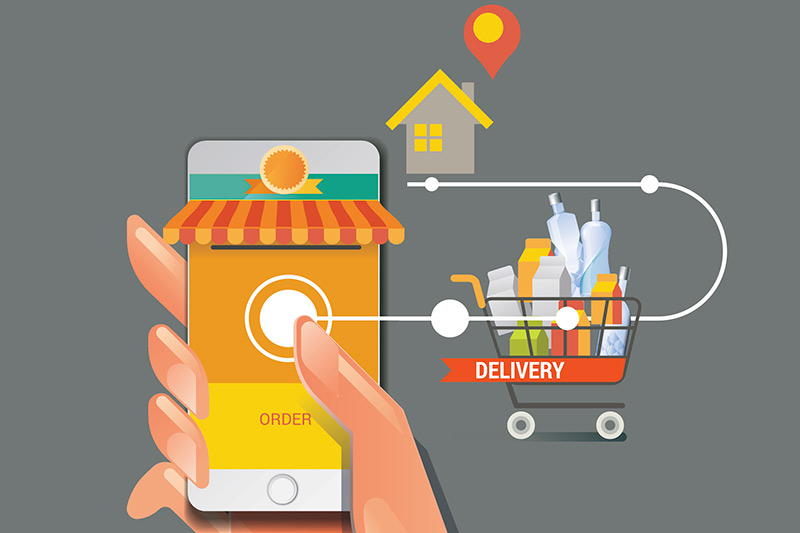
The Automated Grocery War Between Walmart, Amazon and Delivery Apps
Amazon is making big strides to compete with Walmart for the grocery market, having purchased Whole Foods for $13.7 billion. This acquisition puts the company in direct competition with Walmart’s established online business, currently offering online grocery shopping, delivery (for most), and pickup.
In response to Amazon’s purchase of Whole Foods, Walmart stock prices quickly dropped by 3% while Amazon’s increased by more than 2%. Investors clearly believe in Amazon’s e-commerce strategy and history of success. Walmart is going to have to focus on their online user experience if they want to successfully compete with Amazon to keep their existing share of the grocery delivery market. There is little doubt that Amazon will be successful in taking at least a noticeable bite out of Walmart’s grocery market share.
Walmart, which currently stands as the leading grocery brand in the US, has been beating out big-name competitors including Kroger and Safeway for some time now. According to a 2015 consumer report, stats showed that Walmart controlled 25% of the grocery market in the US, whereas the company only captured 7% of the market 13 years earlier in 2002. With a big new player in the market will Walmart be able to continue to control such a big share of the market? Will the company be able to continue to grow in the face of increased competition?
New Concepts and Emerging Delivery Apps
Amazon is testing out new concepts to make grocery order and pickup more convenient. In May the company opened two test sites in Seattle allowing Prime subscribers to make online grocery orders that they could then pick up at a drive through window. Americans love drive-thru windows and it wouldn’t be surprising to see something like this take off as consumers appreciate saving time and skipping the grocery store as long as they will continue to get high quality products at an affordable price.
Walmart has also begun testing a different convenience concept. Walmart is allowing customers to order groceries using an app, arrange a pickup time and location, and arrive to have your car loaded for you. Walmart even guarantees the same prices and a money back guarantee promising to provide you with the freshest items or your money back.
Who’s Winning?
As Amazon works to build it’s grocery business and Walmart defends it’s market share the two will likely become closer and closer to offering the exact same service, however for now many shoppers are noticing that while Amazon offers a greater selection, Walmart is winning the price war as well as offering substitutions, which Amazon will likely adopt eventually.
Walmart has not yet begun offering delivery to all markets, while Amazon obviously does, though some have noted a considerable eco-waste issue mitigated in part by Amazon’s willingness to pick up and reuse a significant portion of the packaging used for deliveries.
A big factor working in Walmart’s favor is that Amazon’s minimum delivery order is higher ($50 to Walmart’s $30 minimum) and Amazon also requires a $14.99 monthly membership fee.
Increasing Competition
Everybody is offering grocery delivery. Safeway has been offering online ordering and delivery for some time. Instacart offers to shop at multiple stores for you and deliver in as little as 1 hour. Raleys offers grocery delivery. Google has also started offering grocery shopping online by playing the middle man between you and stores like Target, Costco, Walgreens, Whole Foods, and more. It seems as though every day a new grocery delivery service is popping up. Clearly consumers are hungry to make grocery shopping faster, easier, and cheaper. Whichever company can offer the best balance of quality, price, and convenience is likely to come out on top.
Understanding E-Commerce Can Do a Lot for Your Online Business
The more you read, test, and think about what consumers want in online shopping the better you can grasp your own online business and where you are succeeding or failling. The grocery war currently going on between Amazon and Walmart (and many others) is rightfully getting a lot of attention both from the public and from the companies themselves as they pursue greater success. For now you have a lot of options, each with their own benefits, it will be exciting to see who emerges as the top online grocer, or alternatively how different companies hold on tight to certain niches that will hone in on a particular aspect of the shopping experience that their customers simply can’t live without, whether that’s speed, cost, variety, quality, or something completely different.